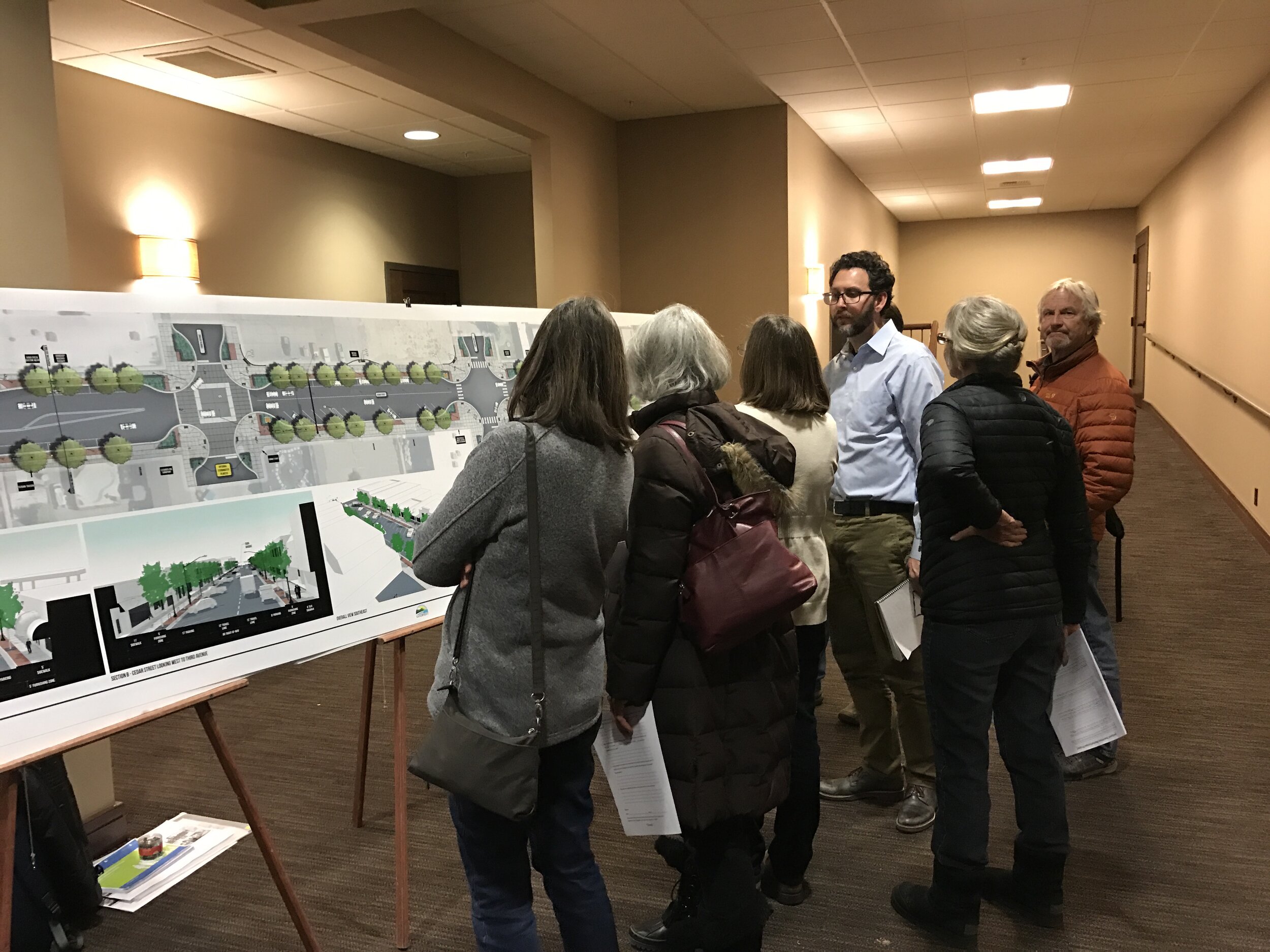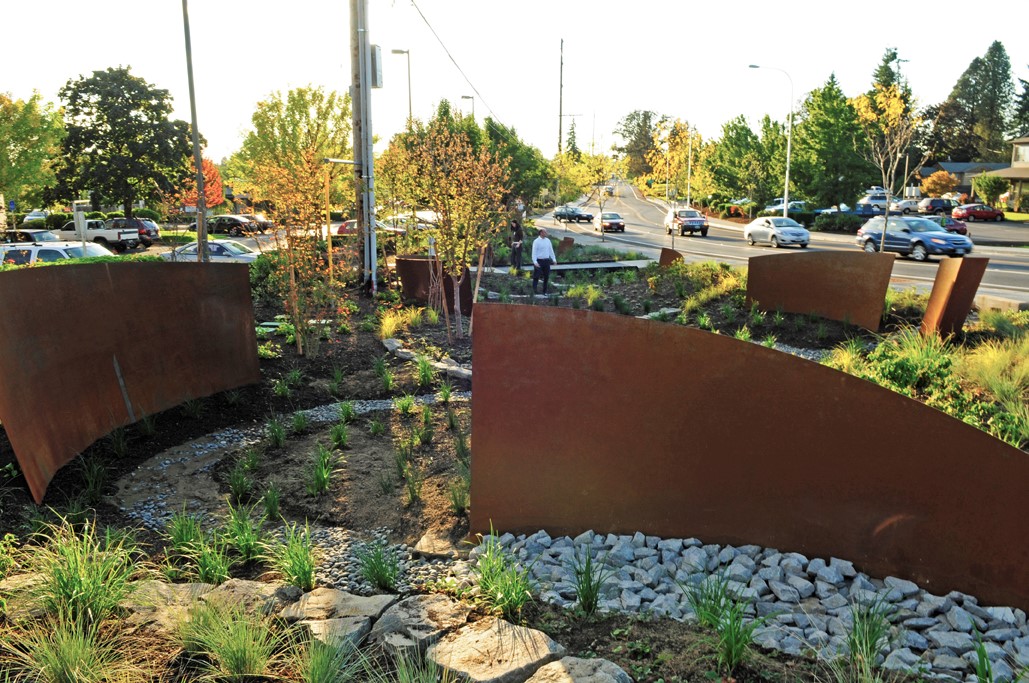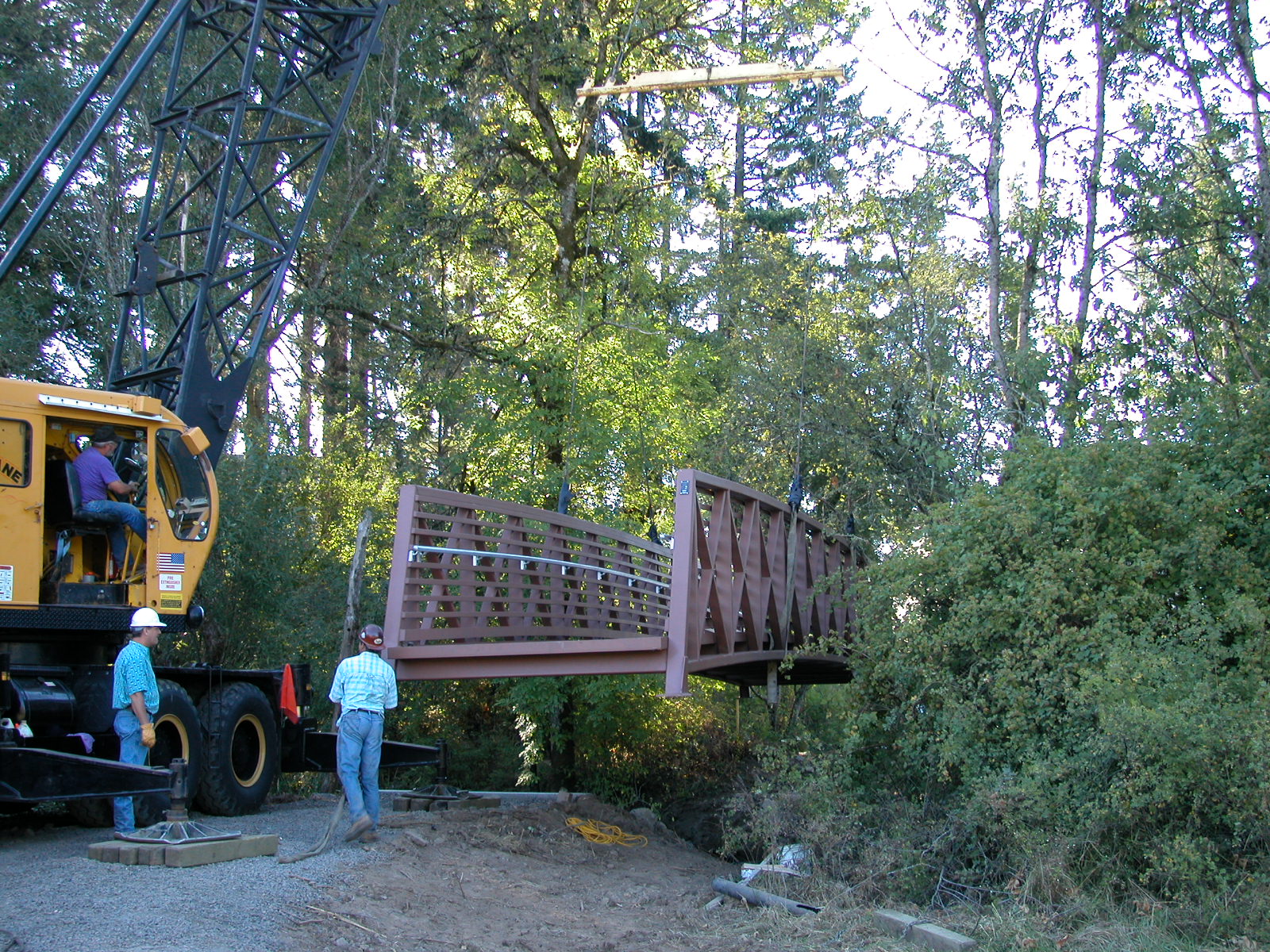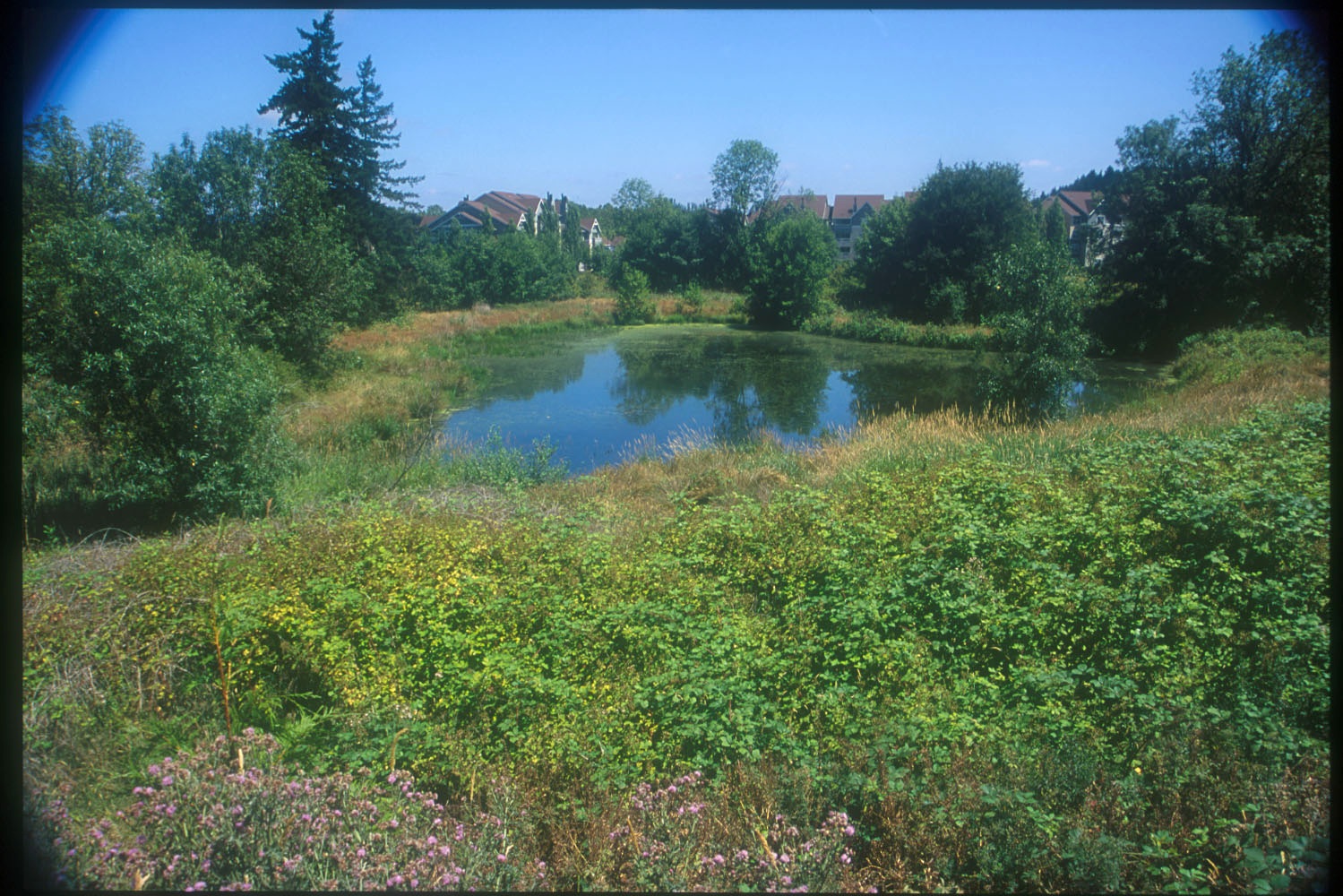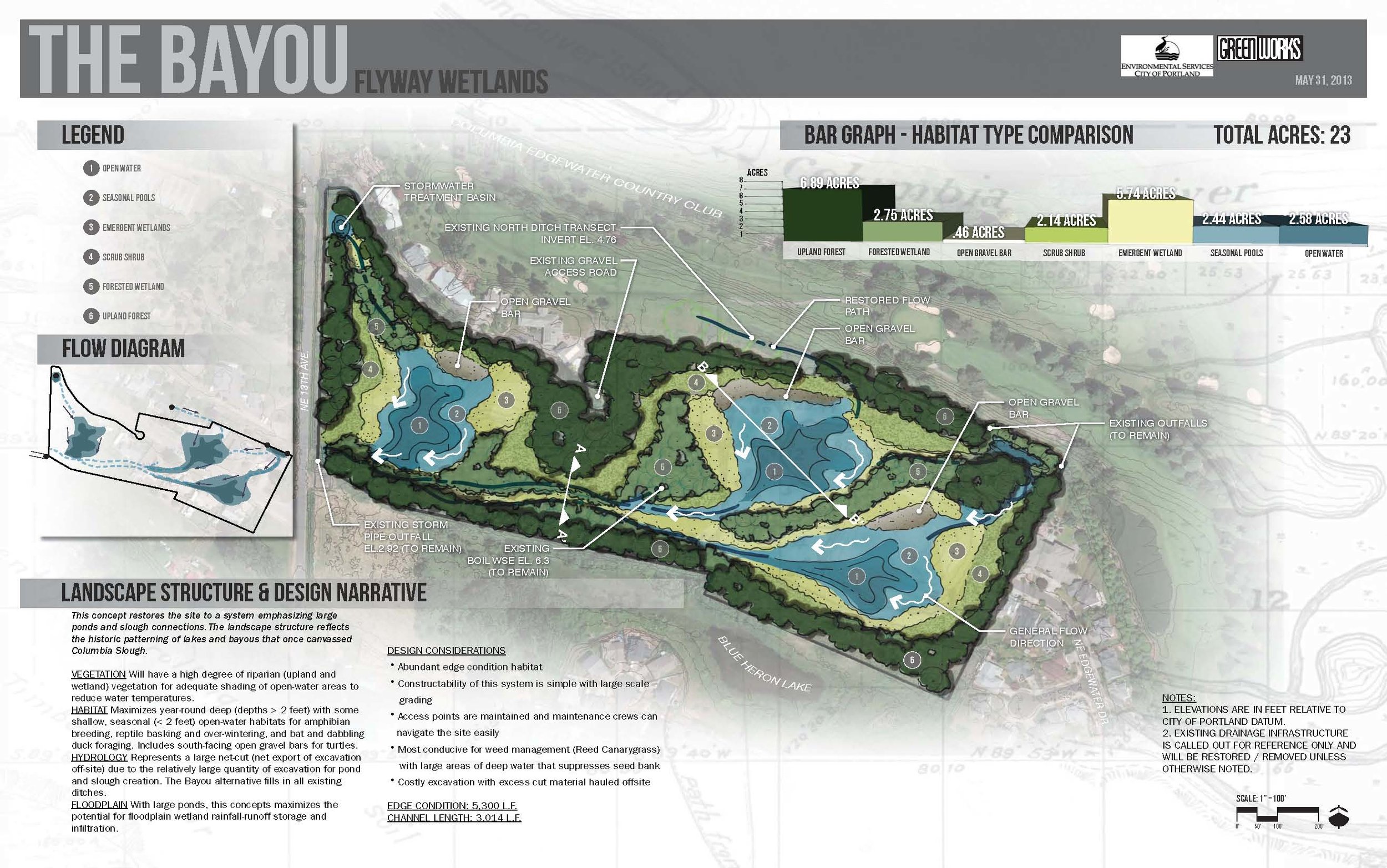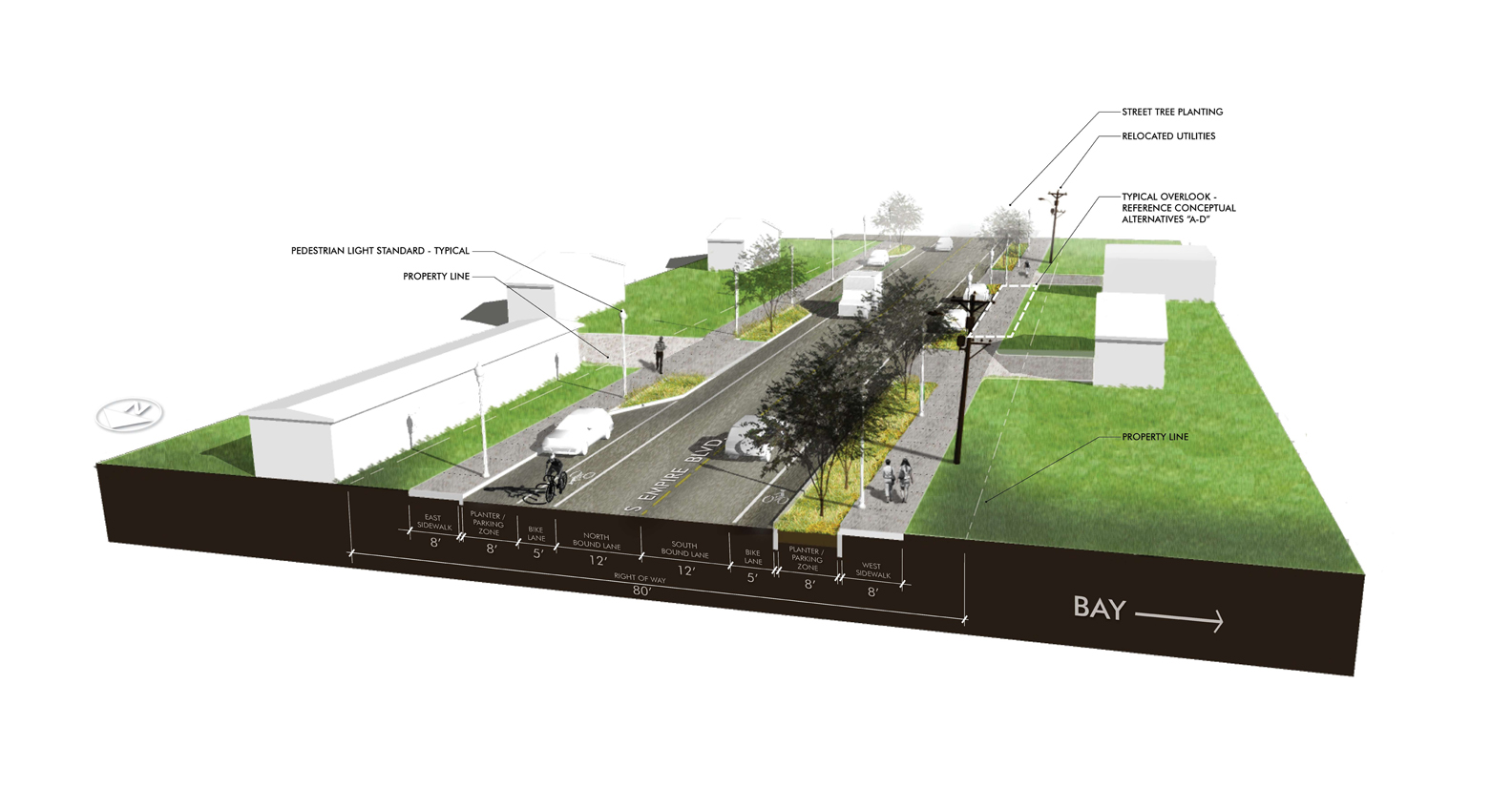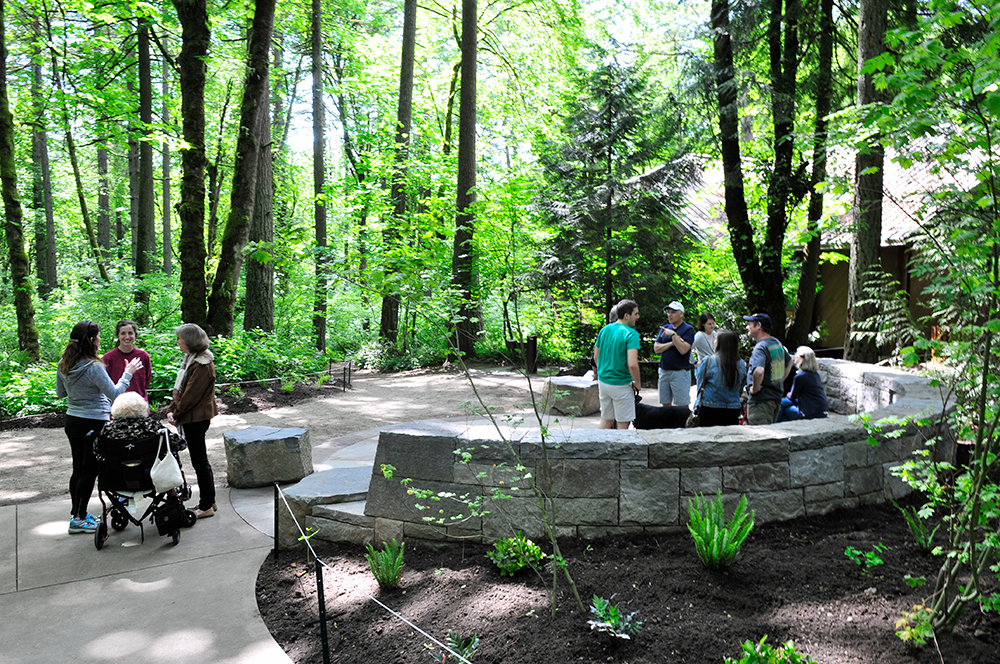In November of 2014 GreenWorks began a site assessment and preliminary design for the Johnson Creek Oxbow Enhancement Project. The central feature of the site is the namesake “Oxbow” meander, which is bounded on the south by a bypass channel that truncates the oxbow creating an island. The by-pass channel was constructed by the Works Progress Administration (WPA) in the 1930’s and included armoring the creek bed and banks, and creating a fish ladder in the oxbow to maintain fish passage. The goal of the WPA work was to convey flood flows efficiently downstream. It resulted in a confined channel, which is hydrologically disconnected from adjacent floodplains and wetlands, and exacerbates flooding. GreenWorks was charged with providing design strategies for improving floodplain hydrology, riparian and in-stream habitat, and local flood impacts.
To support these goals, GreenWorks held a one day charrette, which included members from BES, ESA-Vigil Argimis, and KPFF to discuss and recommend a variety of design strategies for improving the inherent conditions found within the Johnson Creek Oxbow. Recommendations were collected and vetted amongst the consultants and further discussed with BES to determine a set of design alternatives for specific sites within the project area. Project sites were mapped, along with support graphics and images, and cost-estimates, to BES in a comprehensive Pre-Design report, thus allowing BES to prioritize future improvement projects for the Johnson Creek Oxbow area.







